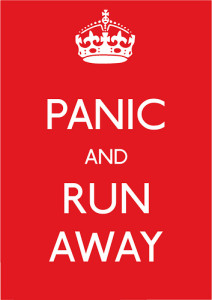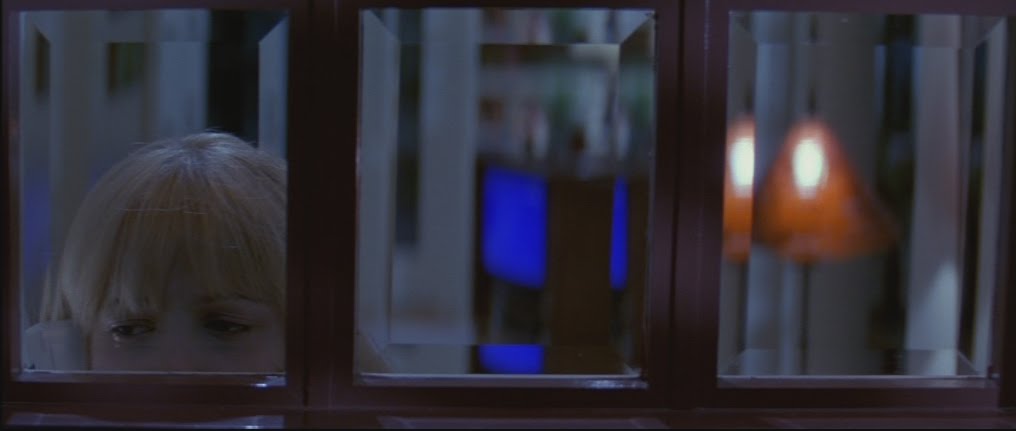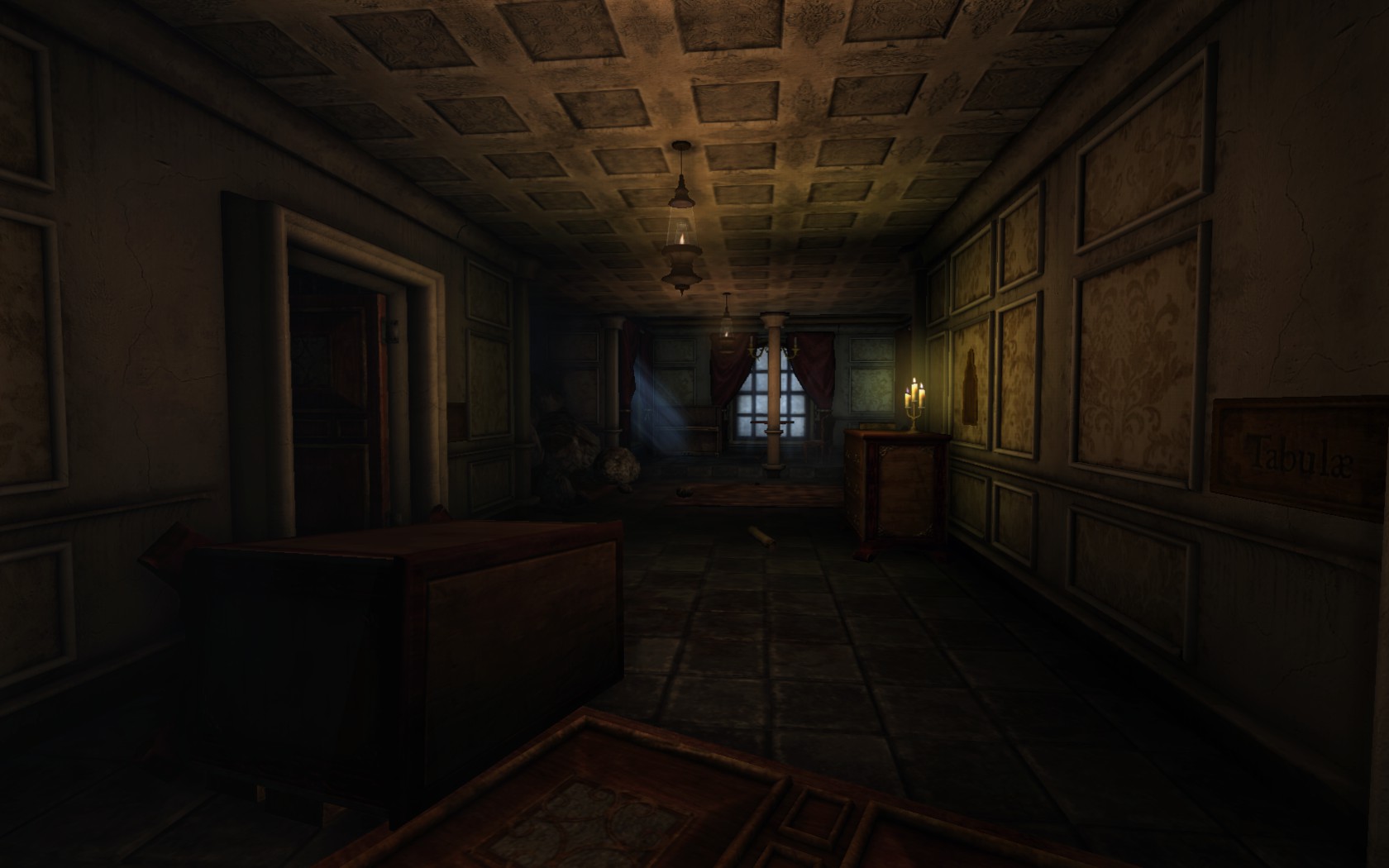It’s October, and we all know what that means. It means Pumpkin everything: pumpkin spice, pumpkin cheesecake, Pumpkin Kings. It’s really a grand old time to hoard gourds. Then there’s that other thing, the part of the season that’s designed to worry you. The bit that sends the occasional chill through you, and makes the fur on your neck stand up straight. I’m not sure what it is exactly, but there’s something that bends shadows just a little more towards sinister at this time of year. You may know the feeling I’m talking about, but do you know what it is?
It’s easy to say, “I’m scared,” and be done with it, but that’s not the only thing you can feel. “Scared” when you really think about it doesn’t really mean anything. It could mean “dread,” as in you are in a situation and dread the outcome. That’s a possibility, but that isn’t a proper definition of fear. It could mean that you’ve run from the building, but that’s using fear as a trigger, which doesn’t seem right either. When you get down to it, “scared” is just the verb form of “scare,” which according to good old Mr. Webster is: A sudden attack of fright. But then that really just makes the definition circular since “fright” means to cause fear and those two words are almost synonyms.
Although now it seems like we are just chasing our own tails looking at definitions. What we really need are examples, and to narrow the scope a bit. So let’s start with, what it means to feel “Fear.” Then, is it any different than Terror and Horror? The word person in me wants to believe that these are not just different facets of the same feeling, but distinct reactions to different stimuli. To prove it, we’re gonna look at the first scene from the horror classic – Scream.
Feeling the Fear
So let’s get started then with the first item on the hit parade – Fear. Webster says that fear is “an unpleasant emotion caused by the belief that someone or something is dangerous, likely to cause pain, or a threat.” Mr. Thesaurus would say something different, namely that fear = apprehension. The key is that fear isn’t anything tangible, it is just an emotion. Don’t get me wrong, fear is a strong emotion and it exists for a reason. It probably had something to do with keeping our collective ancestors alive back in the day when the world looked more like The Lion King.
So let’s look at some examples for this definition of fear. Namely, here comes the first few minutes from Scream. By the way, this is going to spoil the whole start of the movie, but since it came out in 1996, get over it.
Alright, so there’s a few things. Let’s ignore those opening credits because they give you the creepies before the first shot even starts. It’s good film making, but outside of the scope of this piece. Having said that, this whole sequence is a master class in suspense. It starts innocuously enough with what seems like a strange phone call. Then at the 30 second mark, the phone rings again and the camera zooms in on the gorgeous Ms. Barrymore. That look on her face as she glances at the phone is that exact apprehension that we’re talking about. Now, the phone ringing has stopped being an everyday occurrence and is now strange in the HP Lovecraft sense of the word.
But upon answering again, it’s still okay. The emotion on display is now catharsis. This is a key part of what fear is. It’s just an emotion, and there is nothing physical about fear. Maybe your palms get a little bit moist, but you’re still in control. Coincidentally, that’s why you can suppress and overcome your fear. In this part of the scene that fear is overcome when she answers the phone again. The core of fear is the belief that something might happen. It is not how you react in the face of something actually happening. Getting past that is a really good feeling because basically, you’ve won. This catharsis quality is one of the factors that makes fear unique.
But getting back to Scream-ville , at about the 1:15 mark in the clip the phone rings again, and the apprehension is back but now it’s stronger than before. Again, in a fake out, there is another pleasant conversation, and more catharsis. In this case director Wes Craven is lulling the audience into a false sense of security. Well, right up until 1:42 when Casey Becker (that’s the character’s name apparently) plays with a knife in a bit of Checkov’s Stabby Implements. Anyway, there’s some meta-commentary about Nightmare on Elm Street and then at 2:18 Caller #1 makes it weird. Then that fear is back, and it’s stronger than before because the belief that something bad might happen has increased. Now the weirdo on the phone can apparently see her.
Panic (and Terror) at the Disco!
Let’s summon up the ghost of Webster again and define Terror. He says it’s, “a very strong feeling of fear.” Or if you like your definitions like you like your jerks, which is to say circular, then definition #2 is, “something that is terrifying.” We’re obviously on our own now when it comes to defining what Terror is, because the dude that had the one job took the day off to go drinking. Anyway at the 2:51 mark the creepy caller calls back, and things start to get out of hand. Now she’s starting to panic and at 3:17 shit just got real. This is where I think that terror becomes different than fear. Terror is an actual physical reaction to a circumstance. It’s closely related to panic.
Panic is something that people say they are doing all the time. ‘Oh my god, I’m panicking, I have so much Xmas shopping to do.” They’re wrong, and that word doesn’t mean what they think it means. A panic, a full on panic is when people lose faith and control of their situation and react without thinking. In history books this panic is what leads to a rout, and everybody gets killed. On a small scale this is the same feeling that causes people in horror films to run up the stairs when they should just flee from the building. Since terror and panic are physical reactions you do not just overcome them, and you cannot easily push them down. Instead you have to control it. While it will still be there you can wrest your own actions back from it. This is what allows for panicked troops to be rallied and for the Final Girl in horror movies to make a stand.
on panic is when people lose faith and control of their situation and react without thinking. In history books this panic is what leads to a rout, and everybody gets killed. On a small scale this is the same feeling that causes people in horror films to run up the stairs when they should just flee from the building. Since terror and panic are physical reactions you do not just overcome them, and you cannot easily push them down. Instead you have to control it. While it will still be there you can wrest your own actions back from it. This is what allows for panicked troops to be rallied and for the Final Girl in horror movies to make a stand.
Something that’s interesting is that feeling of panic and terror in the right context is a lot of fun. It’s true. Let’s take a roller coaster for example. It’s really high, and likely very fast, and panic/terror is going to happen to you when you get on it. Beforehand maybe there was some fear, but you overcame that (to a certain extent) to get on. Then the ride started and you don’t really have a choice anymore. Your eyes will dilate, and your palms may sweat. Your heart rate is going to spike and your body is going to dump a gallon of adrenaline directly into your system. In other words you’re going to have the same reaction as if you were being attacked by a lion or a Ghostface Killer. What’s weird about that is it is exciting on multiple levels. Back in the day those were the same feelings hunters had when they were hunting animals. So being able to experience that in a safe environment, like a roller coaster, is something that some people really enjoy on a deep level.
Getting back to Scream though, at 3:30 Casey is terrified, and in full panic mode. She runs through the house and starts locking up doors. While not a full on “lose control” situation it’s not like she’s fully rational, so she is in a state of terror. Once they’re locked up again at 3:45, she’s very afraid, but now she’s in more of a fearful state. In control again and able to determine that she could call the police. Why she doesn’t hang up the phone is a question for another time. But she has regained control. In effect, she’s locked the doors, created a defensible position in her house (or so she thinks) and, for lack of a better word, has rallied.

For the next minute or so until the end of the clip, Casey freaks out, screams a lot and basically asserts her “fight” response instead of the terrified “flight and lock the doors” response. It’s the same reaction people show who are cornered. So let’s put on our sociopath hats and talk about how terror is sort of fun to watch. No, seriously. Then in the middle (around 4:00 if you’re keeping track) the killer has a conversation with Casey about the dumb things people in scary movies do. Since we are outside the movie we are not having the same terror response as poor Ms. Becker is in the throes of. We instead get to use our magical powers of separation and watch her reaction and ask pithy questions like, “why didn’t she hang up earlier and call the cops?” This second guessing, or Armchair Final Girl, is part of the fun of scary movies. We shout encouragement and advice that is ignored because the poor, totally screwed, teenagers can’t hear us and have no sense. I would argue, that because being terrified literally makes you stupid, in the same situation we do the same sorts of things. But watching it happen to other people is sort of fun. Scary movies are, in this sense, a sort of psychological nut shot video. But it is what’s in the next clip from Scream that will get us to the final little definition of the day.








